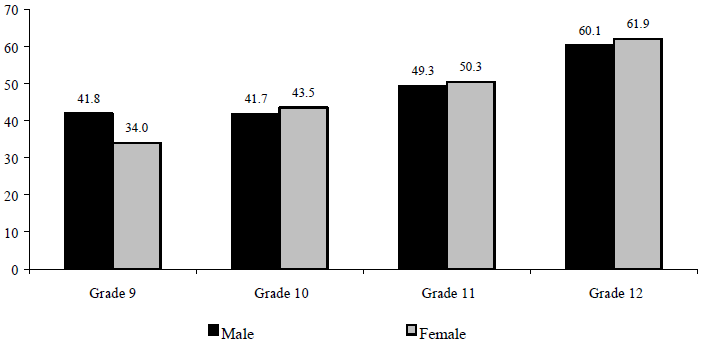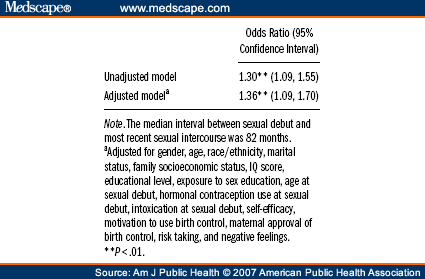For males, early sex has been associated with an increased likelihood of subsequent risk-taking behaviour, and a higher risk of developing a substance use disorder [22, 23].
The 1997 Youth Risk Behavior Survey, conducted by the Centers for Disease Control and Prevention (CDC), reported that black males (33%) are three times as likely as Hispanics (11%) and nearly seven times as likely as whites (5%) to have had intercourse before the age of 15.



The results for the effects of age at diagnosis on specific behavior changes suggest (p<.10) that within the sample overall, being older at diagnosis may be related to a subsequent reduction in the frequency of intercourse, while being er may lead to an increase in condom use.
To estimate whether providing no-cost contraception is associated with the number of sexual partners and frequency of intercourse over time. Methods This was an analysis of the Contraceptive CHOICE Project, a prospective cohort study of 9,256 cents and women at risk for unintended pregnancy.

Sexual intercourse, romantic relationship inauthenticity, and cent We argue sexual behavior may have negligible or even positive effects on mental health when enacted within romantic relationships characterized by low levels of inauthenticity. We aim to advance the understanding of the conditional effects of sexual intercourse on

Having an older first sex partner during cence was associated with sexual risk behavior in adulthood. Early sexual experiences may be important life events that influence subsequent sexual behavior.


If we believe that most of our adult sexual behavior is the result of our identification with, and imitation of, certain individuals, and the subsequent positive reinforcement of these behaviors, then we are using which of the following theories


According to evolutionary psychologists, Brittla’s behavior is a product of: genetic predispositions. If a genetically based attraction to beautiful people contributes to survival, that trait will likely be passed on to subsequent generations.
In any case, extremes of sexual behavior during cence can be used sensibly to draw the clinician’s attention to possible disorders of subsequent sexual behavior and, more expansively
